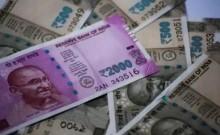
India is expected to retain the "fastest-growing economy of the world" tag for some more time, according to projections for 2017 released by Fitch Ratings. The country is expected to grow at 7.7 percent in FY2018 (April 2017 to March 2018), outstripping China's projected growth of 6.3 percent for calendar year 2017.
India overtook China in the last quarter of calendar year 2015 to wrest the "fastest-growing economy" tag from the dragon country, when its economy expanded at 7.3 percent, outstripping China's 6.9 percent.
The projections form part of Fitch's Global Economic Outlook (GEO) - March 2017 released on Tuesday.
The Chinese government's own growth projection for 2017 is 6.5 percent, down from 6.7 percent last year.
Here are the top takeaways from the Global Economic Outlook:
India
Year-on-year GDP growth slowed only marginally in 4Q16 (December 2016 quarter), to 7 percent from 7.4 percent in the previous quarter. It's surprising, as real activity data released since demonetisation pointed to weak consumption and services activity.
GDP to grow by 7.1 percent for FY16-17, before picking up to 7.7 percent in both FY17-18 and FY18-19.
Gradual implementation of the structural reform agenda is expected to contribute to higher growth, as will higher real disposable income, supported by an almost 24 percent hike in civil servants' wages at the state level.
Expect the policy interest rate to stay at its current level of 6.25 percent.
China
GDP growth is expected to fall to 6.3 percent in 2017, a downward adjustment of 0.1pp since the November 2016 GEO.
Real fixed asset investment slowed at the end of 2016 and will likely dip further this year as credit growth slows.
Growth in 2016 as a whole was slightly faster than the government's target at 6.7 percent. GDP has expanded at an annual average rate of 7.7 percent since 2010 and would need to grow at 6.4 percent per annum over the next four years to hit the authorities' objective of doubling real GDP by 2020.

US
The world's biggest economy is expected to grow at 2.3 percent this year and 2.6 percent in 2018.
Growth rate at 2.6 percent (annualised) in the second half of 2016 was high compared to 1.0 percent in the first half.
The anticipation of tax cuts, broader fiscal stimulus and a likely loosening of financial and business regulation under President Donald Trump saw US equity prices rally at the end of the year and bolstered business confidence.
The ongoing resilience of job creation also supports a slightly firmer outlook for consumer spending.
Corporate tax reform proposals from House Republicans entail the imposition of a Border Adjustment Tax that could result in US imports becoming subject to corporate taxes at a 20% rate and US exports exempted as part of a wider move towards a destination and expenditure based US tax system. This would have a potentially large beneficial impact on US terms of trade, which would not necessarily be fully offset by a stronger dollar.
Eurozone
GDP growth is forecast to remain unchanged (1.7 percent) in 2017 and to slow only marginally to 1.6 percent in 2018, , both years' forecasts 0.2pp higher than in the November GEO.
The economy grew by 0.4 percent qoq in 4Q16, and the annual GDP growth in 2016 was 1.7 percent.
Consumption growth, driven primarily by employment growth, is forecast to slow in 2017. Households' real disposable income would no longer benefit from previous falls in energy prices as headline inflation has picked up.
The surge in populism and anti-EU sentiment in the context of a heavy European electoral schedule in 2017 creates the potential for a revival in concerns about eurozone fragmentation.











